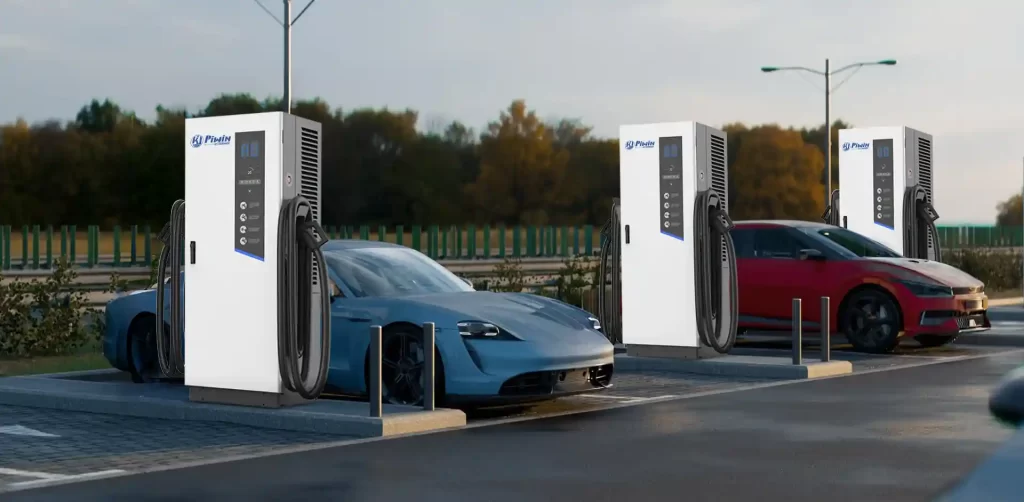
Products
Fast, Reliable, Everywhere

Solutions
Efficient, Innovative EV Charging Solutions.
In recent years, electric cars (EVs) have gained popularity as an economical and ecologically beneficial alternative to conventional gasoline-powered automobiles. But, charging their vehicle is one of the top worries for EV drivers. Everything you need to know about electric vehicle charging will be covered in this post. More drivers are choosing electric vehicles, which has increased the demand for electric vehicle charging. Drivers of electric vehicles may take advantage of several advantages, including cost savings and convenience. To guarantee a safe charge, it's crucial to comprehend the various charging methods, the required tools, and the right procedures. EV owners may make the most of their vehicles with the appropriate information.

Electric vehicle charging may be divided into three groups: Level one, Level two, and Level three.
Although level 1 charging is the slowest, it might be the most practical because it simply needs a regular 120-volt outlet. 4-5 miles of the range may usually be obtained from this charging in an hour. For cars with smaller battery packs and shorter travels, level 1 charging works well.
The most popular EV charging method for domestic and public charging outlets is level 2. A 240-volt outlet is needed, which has more power than a typical 120-volt outlet. Around 25 miles of the range is normally obtained with level 2 charging in one hour. A Level 2 charging cord is typically supplied with electric vehicles, but you might need to buy one separately if it is not.
The quickest method of EV accusing is level 3 charging, sometimes called DC fast charging. In just 30 minutes, it may deliver up to 80% of the charge. Nevertheless, Level 3 charging is only commonly accessible at public charging stations and requires specific equipment. For longer journeys or when you need to charge your vehicle swiftly, level 3 charging is recommended.
Parking lots, retail establishments, and rest areas are popular locations for public charging stations. Level 2 or Level 3 charging facilities may be present at these locations. Public charging stations could cost money to use, or they might not. Some public charging stations are owned by electric utility corporations, while independent businesses run some.
The most practical and economical method of recharging an electric car is at home. Installing a Level 2 charging station at your house will enable quicker charging than a typical 120-volt outlet. Depending on the type and functionality, a home charging station can cost anywhere from a few hundred to several thousand dollars.
The car's battery's size and the charger type determine how long it takes to charge an EV. The size of the battery affects charging times as well. For instance, a car with a smaller battery pack will charge more quickly than one with a bigger one. Here are some rough charging times for various charger types:
Check and repair your charging equipment regularly to ensure it functions properly. Ensure the cords are not frayed or broken and clean the charging port often. Get a skilled professional to make the required repairs if you come across any problems.
Knowing your electric vehicle charging capabilities, including the battery capacity, charging rate, and charging port type, is crucial before you begin charging it. You may use this information to decide the best charging method and how long to charge your EV completely.
Electric cars may be charged primarily using Levels one, two, and Direct Current. Level one charging is the slowest option and utilizes a regular home outlet, whereas Level two charging offers a quicker charging rate. The fastest charging method is DC fast charging, although these stations are more difficult to find than Level 2 outlets.
Plan your charging routine in advance to guarantee that you have enough battery life for your everyday activities. You should locate charging stations along your route and schedule your pauses properly if you have a lengthy commute or intend to take a road trip.
Monitoring your battery levels is important, especially if you're travelling far. In most EVs, the estimated range and battery charge level are shown on the dashboard. Monitoring these indicators and modifying your driving style or charging schedule is crucial.
While it may be alluring to always charge your electric vehicle to 100%, there are better courses of action than this one. Your battery may experience additional stress and lose its life if you charge it 100%. Instead, maintain a 20% to 80% battery charge level.
You may reduce the cost of your power account by taking advantage of the off-peak rates that certain utility providers offer for charging electric cars. Use these costs by charging your EV after business hours.
